Are you in need of a spiritual renewal? If so, pilgrim trips in India for ultimate nirvana hold the key.
India is the perfect destination for you as this country is home to some of the most sacred and spiritually significant sites in the world. Whether you’re looking to find inner peace or to gain a deeper understanding of your own spirituality, India has something to offer everyone.
Because India is a multicultural country and a religion, it is no surprise that it is home to some of the world’s greatest and calm pilgrimage trips and holy places. Every year, millions of Indians embark on a pilgrimage, a meaningful trip with deep ethical and cultural value for people of faith.
Here are some of the most amazing pilgrimage journeys that everyone should do at least once in their lives.
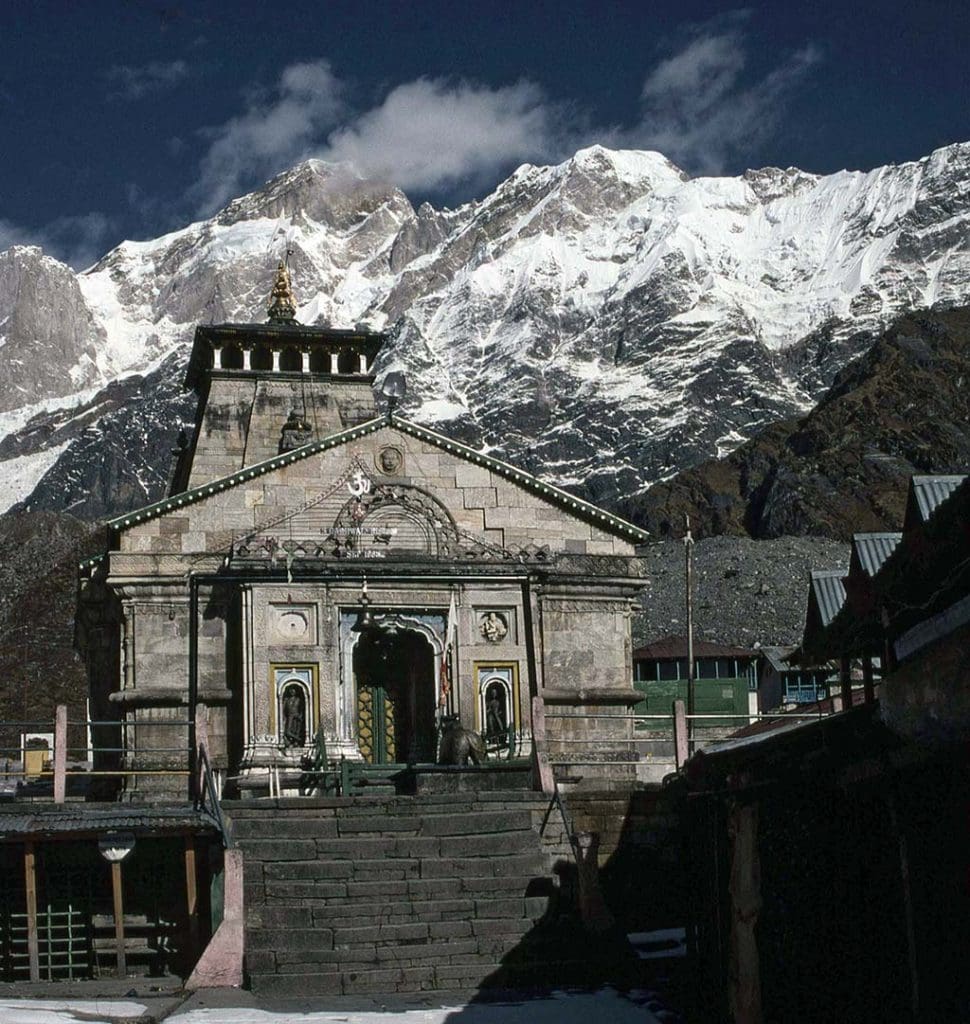
Image Credits: Richard Haley
Kedarnath Temple, Uttarakhand
The Kedarnath Shiva Temple in Uttarakhand is among the most beautiful and serene Hindu sanctuaries in the world, positioned at a towering altitude of 3583 meters amid lofty snow-covered peaks. It is one of the twelve Panch Kedars and Jyotirlingas. This sacred site is located in the Garhwal area of the Mighty Himalayas, on the banks of the famous Mandakini River.
According to mythology, this temple was established in the 8th century AD by a prominent Hindu monk named Adi Shankaracharya. Kedarnath Temple is also a part of the Char Dham Yatra, a pilgrimage of four holy sites in India. It is believed that this temple was built by the Pandavas and contains the Jyotirlingam or “linga of light” of Lord Shiva. The temple complex consists of several shrines dedicated to deities like Nandi, Uma Maheshwar, Ganesha, Parvati, and many others.
The temple is open for devotees from April to November each year. During winters, the temple doors are closed due to extreme weather conditions in the region. The journey to Kedarnath Temple is a pilgrimage of faith and devotion. Devotees flock here in large numbers to seek blessings of Lord Shiva and to seek a sense of peace and spiritual fulfillment.
The temple is well known for its awe-inspiring architecture, with its massive stone walls rising in the Himalayan Mountains and carved deities adorning its entrance. The serene atmosphere around the temple helps devotees connect to the divine power within themselves.
The temple complex provides an array of facilities for the comfort and convenience of pilgrims. It also houses several ashrams and meditation centers offering yoga, meditation, and other spiritual activities to make the pilgrimage more meaningful.
Kedarnath Temple is a place of immense spiritual significance. A visit to the holy shrine is thus one of several great destinations for tourists searching for an undiscovered and truly holy trip.
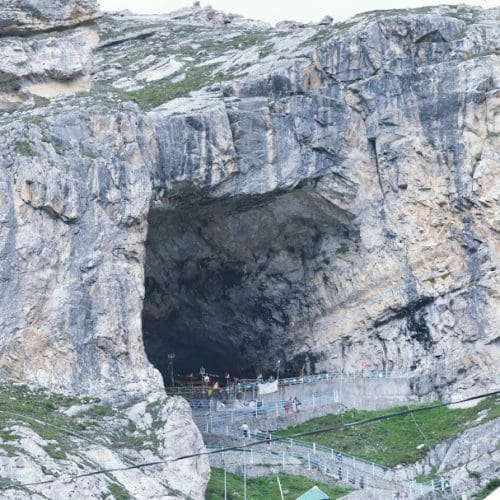
via Wikimedia Commons – Pilgrim trips in India
Amarnath Cave Temple, Jammu & Kashmir
Amarnath yatra, considered among the most tricky pilgrimage walks in India, provides relief to those who make the climb to the summit. This 3888-meter-high trip is impossible to complete if one is not physically and emotionally strong.
As per numerous ancient texts, the Amarnath temple is a highly devoted Hindu sanctuary in India. It is also India’s leading and fascinating cave temple. The ice lingam, which is naturally produced and is seen to adjust the size with the waxing and waning of the moon and the changing of the weather, is the most significant feature.
The Amarnath Cave Temple is a sacred Hindu shrine located at an elevation of 12,756 feet in the Himalayas of Jammu and Kashmir. The cave shrine is a revered spiritual center for Hindus and has been a pilgrimage site since ancient times. According to legend, the cave holds a natural Shiva Lingam that changes size with the phases of the moon. The temple is said to have been discovered by a shepherd’s daughter who, upon finding the lingam inside the cave, notified her father and news quickly spread throughout the area.
The exact age of the Amarnath Cave Temple is unknown but it is believed to be thousands of years old. It was officially discovered by a British army officer in 1850, who also recorded his findings in the Gazetteer of Kashmir. The temple has been an important pilgrimage site since then and thousands of devotees make the arduous journey to visit it each year.
The Amarnath Cave Temple is a site of great spiritual significance as well as historical importance. It is believed to have been discovered by the Pandavas during their exile and is said to be where Lord Shiva revealed the secret of immortality to his consort, Parvati. It also provided refuge for many devotees from persecution, including the great sage Adi Shankaracharya who spent time meditating here.
The temple is now a major destination for Hindu pilgrims who visit it to pay their respects, perform rituals and seek blessings from Lord Shiva. Today, the Amarnath Cave Temple is an important part of India’s spiritual heritage.
The temple is open all year round but only accessible during the months between June and August when the snow melts enough for the pilgrims to make the journey. A traditional pilgrimage takes place every year during this period, where hundreds of thousands of devotees make the arduous trek up the mountain and into the cave temple. This yearly pilgrimage is a unique and powerful experience that represents not just faith but also courage, sacrifice and resilience. As such, it has become an important part of India’s spiritual and cultural heritage.

Kailash Mansarovar
It is a spiritual trip that draws visitors from all around the world. Thousands of Indians visit because they believe Lord Shiva still lives amid the snow-capped summits. This spiritual path, which is only available for a few days each year, is not for the weak of heart. This route is only available to those who have passed the requisite medical and physical examinations.
Mount Kailash, which is 6638 meters high, and Mansarovar Lake, which has stunning bright green and turquoise water, are the two most prominent landmarks in this area.
The pilgrimage to Kailash Mansarovar is considered to be an arduous but rewarding journey, involving a long trek through the Himalayas and camping in various high altitude locations.
The journey towards Kailash Mansarovar involves crossing five high passes, each one more challenging than the last. However, for those brave enough to undertake the pilgrimage, it is an incredible experience that can be life-changing. The route passes through some of the most stunning scenery in Tibet and Nepal, offering breathtaking views of snow-capped mountains, remote villages and beautiful lakes.
At Kailash Mansarovar itself, pilgrims can visit several temples and other sacred sites. The most important is the Mansarovar Lake, believed to be a source of divine energy. Other significant sites include the Ashram of Guru Rimpoche and Mount Kailash itself. Here, pilgrims can meditate and pray in order to attain inner peace and spiritual enlightenment.
Despite the challenges, many people make the pilgrimage to Kailash Mansarovar every year. It is considered a journey of faith and devotion, and one that brings great rewards to those who undertake it. For most pilgrims, the experience will stay with them for the rest of their lives. So if you’re looking for an experience that promises spiritual growth and personal transformation, Kailash Mansarovar is the perfect place to visit.
Rishikesh
Located in the foothills of the Himalayas, Rishikesh is considered to be one of India’s holiest cities. This peaceful city in the foothills of the Garhwal Himalayas, rose to prominence in the 1970s when the Beatles joined Maharishi Mahesh Yogi’s ashram.
Since then it has become one of the popular religious retreat locations for individuals across the globe. Numerous ashrams that conduct yoga and meditation classes, as well as the actual environment required for spiritual awakening, continue to be crowded with foreigners searching for a fresh outlook on life.
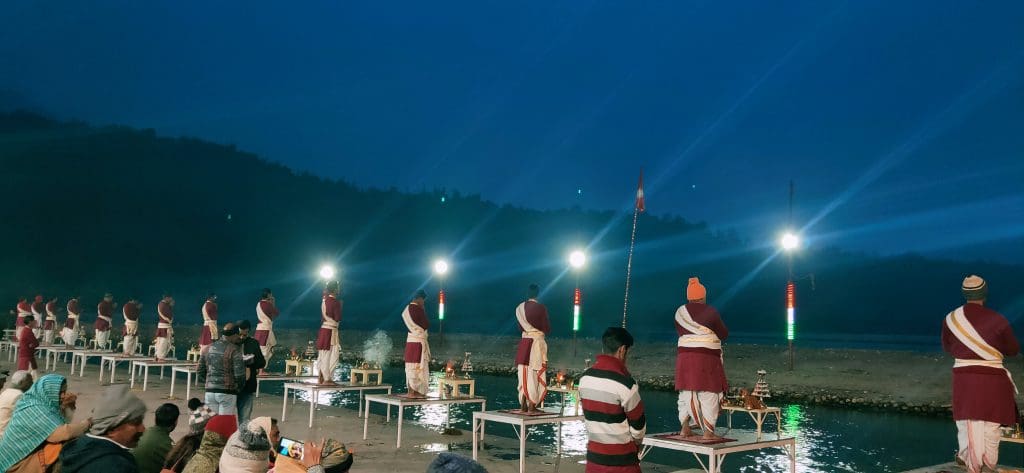
Here, you can take part in yoga and meditation courses that will help bring your inner peace. Additionally, you can visit temples such as Parmarth Niketan, Triveni Ghat, and the iconic Lakshman Jhula.
Rishikesh has more to offer than just being a Hindu pilgrimage site and the yoga center of the world. The town’s star highlight is river rafting. All through the year, adventure enthusiasts witness the excitement of rafting on the Ganges trip.
Phuktal, Ladakh
Puktal in Ladakh is a gorgeous and fascinating monastery built out of the mouth of a mountain, and it is widely recognized as India’s most remote monastery. This Buddhist shrine, located at a height of roughly 3850 meters, is a perfect spot to embark on a divine trip and unwind in the calm of the landscape and religious happiness.
It is usually assumed that this monastery was founded in the 12th century. It is cut into a limestone hillside and surrounded by limestone cliffs, making it a perfect destination for outdoor enthusiasts finding tranquility in the highlands.
Phuktal Monastery is a prominent spiritual place located in the Zanskar region of Ladakh. It is believed to be founded by Rinchen Zangpo, a great translator and master of the early 11th century. He was considered to be the founder of many monasteries and temples in the region, including Phuktal.
The monastery is located in a remote region, surrounded by deep gorges and steep cliffs, making it extremely difficult to access. This isolation has allowed the monks living at the monastery to practice their faith in peace and seclusion for centuries.
The interior of the monastery contains some beautiful examples of Buddhist art, including wall paintings, statues, and other artifacts. Many of the items inside the monastery date back to Rinchen Zangpo’s time or even earlier, making them a unique source of information about the history of the region.
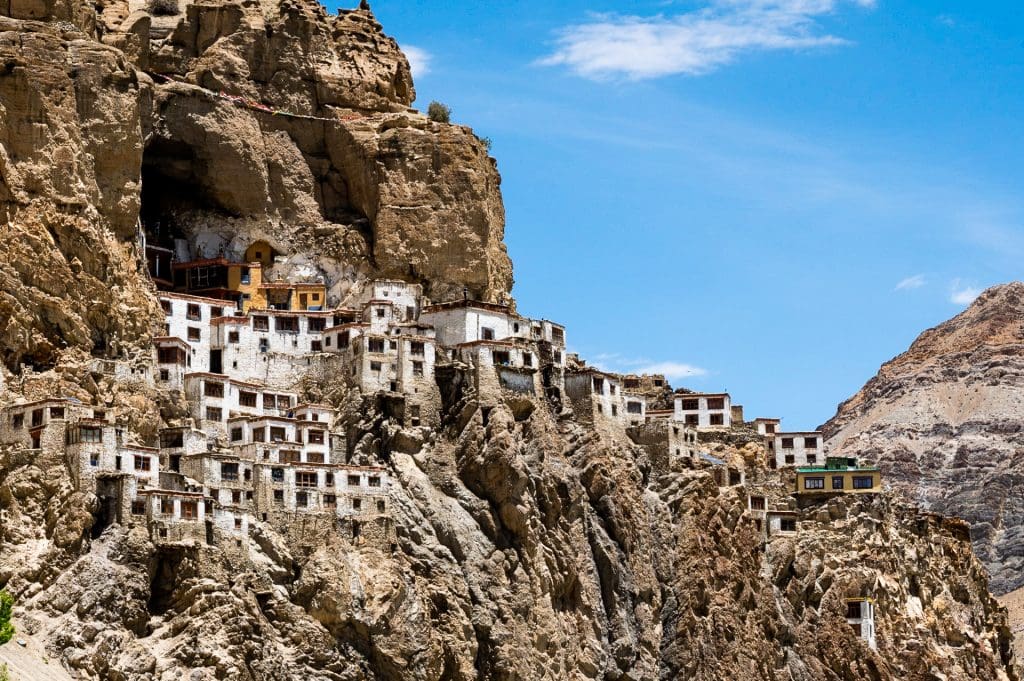
The monks who reside at Phuktal Monastery practice a variety of Tibetan Buddhism rites such as chanting, meditation, and prayer. They are also known for their charitable work in the local community, including providing education and medical services.
The monastery is a popular destination for spiritual travelers, who come to experience the peace and serenity of this spiritual place. The stunning views of the Zanskar valley make it an ideal location for meditation and reflection.
Whether you’re looking for spiritual enlightenment or just to enjoy the beauty of nature, Phuktal Monastery is a great place to visit.
Bodhgaya
This ancient city is home to Mahabodhi Temple, a holy site for Buddhists as it marks the spot where Siddhartha Gautama achieved enlightenment. Here, you can participate in meditation courses as well as visit temples like the Great Buddha Statue and Thai Monastery.
Lord Buddha finished his pursuit for salvation in Bodh Gaya while sitting under the Bodhi Tree. There could rarely be a better spot to slow down a bit, immerse oneself in meditation, and devote time to intense contemplation.
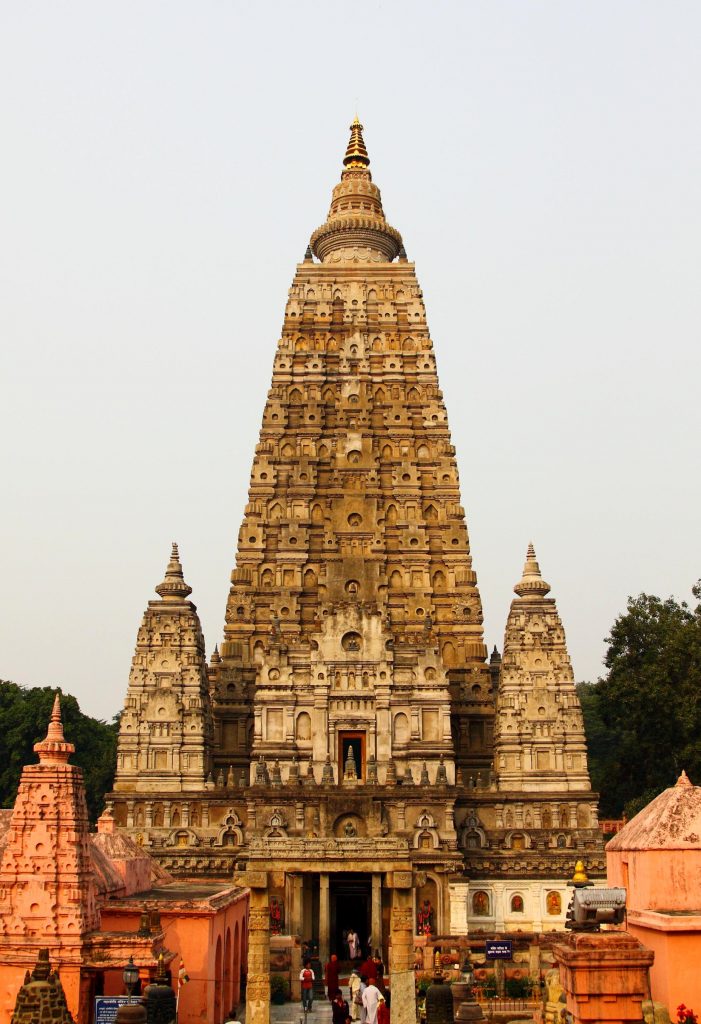
The Mahabodhi temple has existed here since the reign of King Ashoka and is known as the world’s oldest Buddhist temple. Bodh Gaya contains several temples and a few institutions that provide year-round education and meditation programs. Many of these also offer lodging, which is extremely reasonable and a wonderful alternative for this objective.
Varanasi
Varanasi, also renowned as Benaras or Kashi, is the world’s oldest surviving city and is known for its vibrant spiritual atmosphere. Since the classical era, Hindus have considered Varanasi to be the last resting place of Lord Shiva and Parvati. Tourists go to the Ganges Ghats in Varanasi, believing that the river’s hallowed waters would wash them of their sins in this life. Varanasi is a famous choice for tourists around the world because of its mystique and distinct heritage.
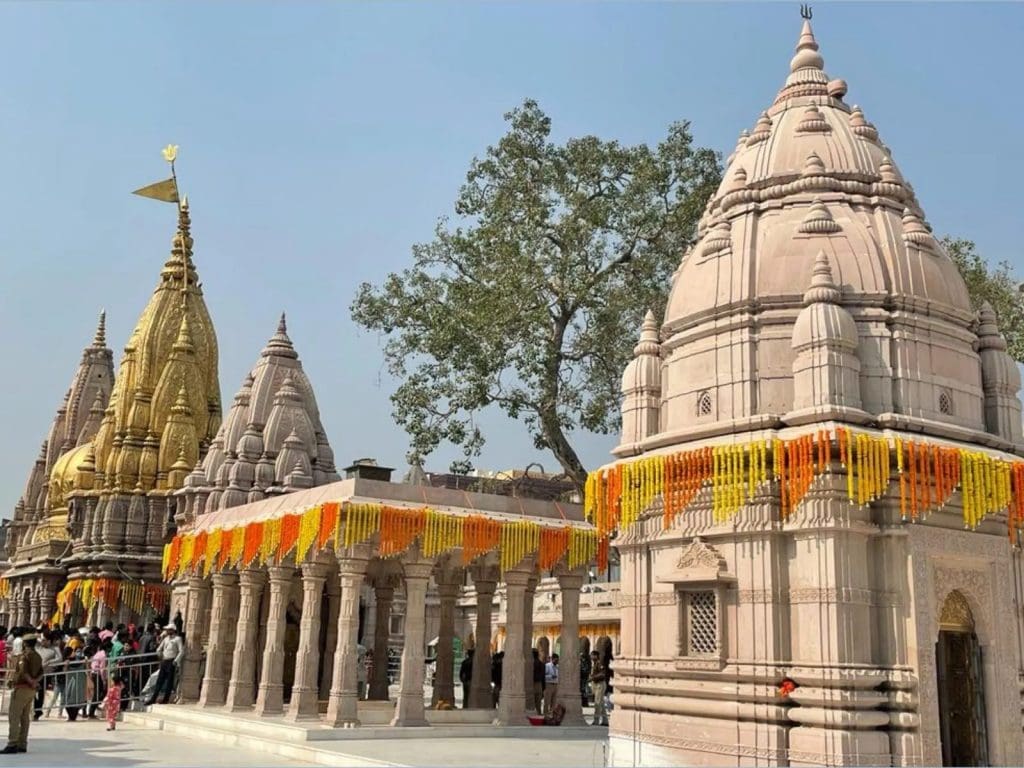
Take a boat ride on the river Ganges while watching the evening aarti ceremony, visit one of the many temples such as Kashi Vishwanath or Sankat Mochan and participate in the rituals that the city has to offer. The night ‘aarti ceremony’, when monks surround the Ganges on its numerous Ghats (like Aasi Ghat) to conduct the prayers with their oil lamps, is a must-see sight. It is also believed that you can attain moksha if you live your last days in Varanasi.
Golden Temple, Amritsar
Home to one of India’s most revered sites, the Golden Temple, Amritsar in Punjab is a must-visit for anyone on a spiritual journey. Here you can find solace at the Harmandir Sahib, the holiest of Sikh shrines.
The most revered Sikh Gurudwarawa was erected in 1604 and retains its radiance and significance till today. Plan a trip to this temple to see the sacred Amrit Sarovar.
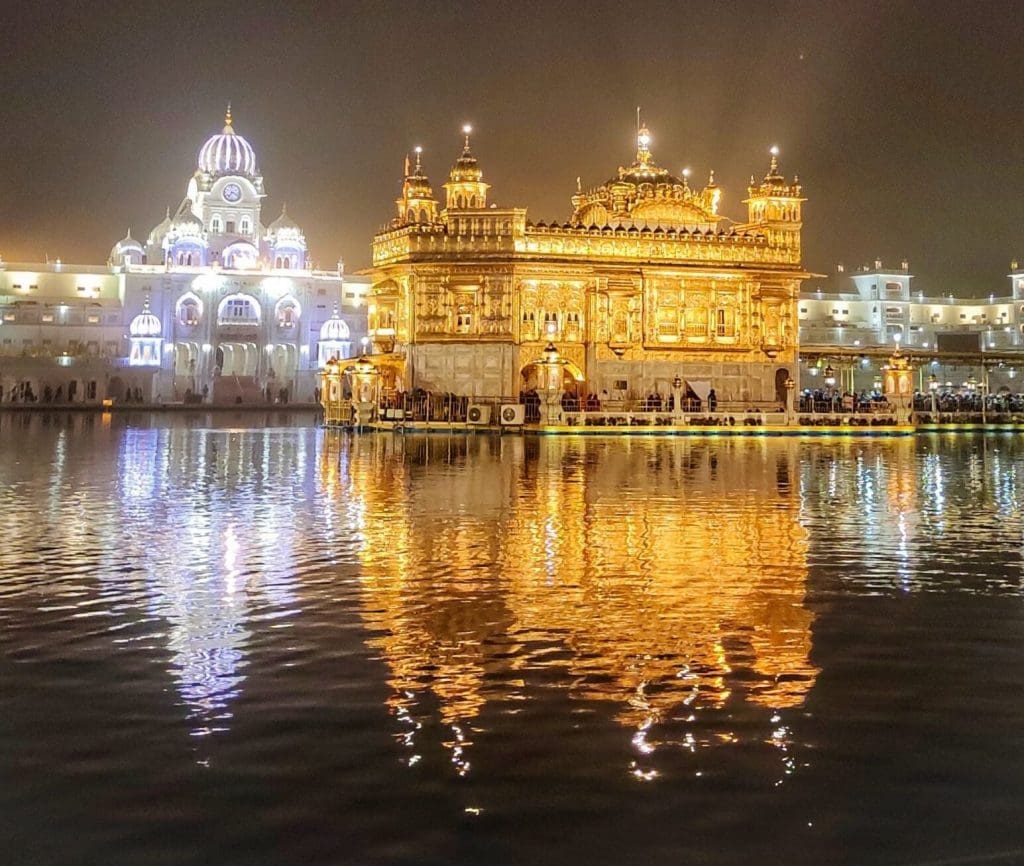
Everyone is invited to partake in the free meal offered to around 20,000 people every day at the Guru Ka Langar (community dinner), regardless of caste, ethnicity, or gender.
Pilgrims must cover their heads and remove their shoes before entering the Golden Temple to pay respect. As one listens to the magnificent sounds of Gurbani (spiritual singing), the serene environment of the temple warms the heart of everyone present there.
Additionally, you can visit other interesting places like Jallianwala Bagh and Wagah Border.
Vaishno Devi, Jammu, and Kashmir
Explore the Vaishno Devi Mandir in Jammu and Kashmir, one of India’s most heavenly destinations, which may be accessed by hiking, horseback riding, or helicopter. While enjoying the beautiful hills, valleys, and mountains, it is recognized as the second most frequented temple after the Tirumala Venkateswara Temple in Tirupati.
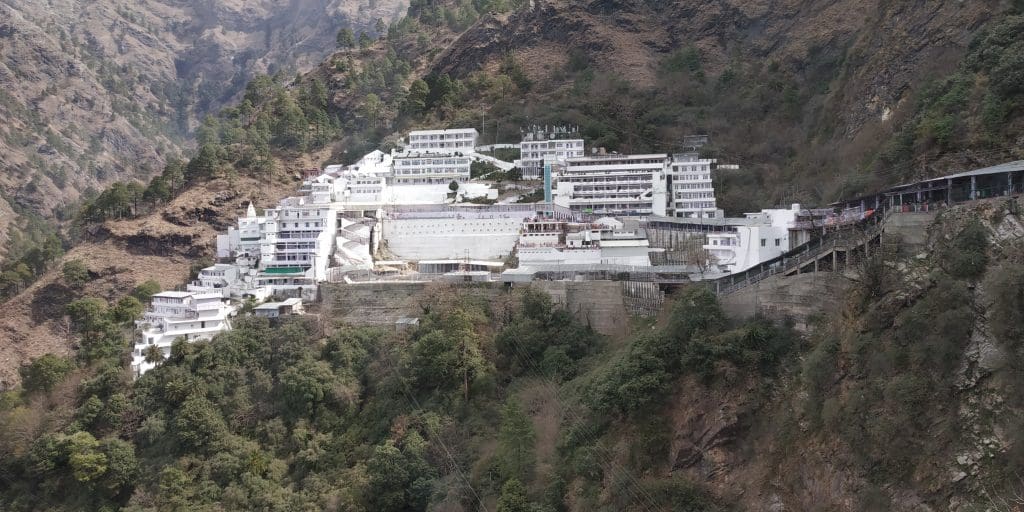
The goddess appears in the shape of a five-and-a-half-foot tall rock with three heads, known as the Pindies, near Mata Vaishno Devi Cave. Worshippers give customary offerings to Mata of chunri (a red coloured drape), sarees, dried fruits, silver or gold jewelry, cholas, bouquets, and so on during the Mata Vaishno Devi journey.
It is said that the deity of this temple, Vaishno Devi, is one of the manifestations of Goddess Durga. The temple is situated at a holy cave located in the Trikuta Mountains and was discovered by Guru Gorakhnath in the 8th century.
The pilgrimage site has been a popular destination for devotees since ancient times and millions of pilgrims visit this shrine every year to seek the blessings of Goddess Vaishno Devi. The temple also offers many spiritual activities such as meditation, chanting mantras, performing puja and lighting lamps to seek the divine blessings from Goddess Vaishno Devi.
The pilgrimage to Vaishno Devi is considered one of the most sacred journeys in Hinduism. Every year on Navratri, a grand celebration takes place at the temple to commemorate Goddess Vaishno Devi. Pilgrims from all over India and abroad come together to celebrate this auspicious occasion.
The beauty of the pilgrimage site is mesmerizing and one can get a taste of spiritual peace amidst nature’s serenity. Those who visit this temple are believed to get the blessing of Goddess Vaishno Devi and can attain spiritual liberation.
Legend and myths aside, Vaishno Devi is no less important from a historical perspective. Archeological and numismatic finds suggest that the region was home to several ancient cultures such as Buddhist, Jain and Hindu. In fact, even Rock Edicts of Ashoka were discovered in this area. Additionally, coins issued by various dynasties, including the Kushanas, Gurjara-Pratiharas and Mughals have been found in close proximity to the temple. This is evidence of a rich cultural heritage that has survived time and evolved over centuries.
Vaishno Devi is an important pilgrimage site not only because of its religious significance but also due to its historical and cultural heritage. This is a place of immense spiritual power that draws devotees from all over the world. People come here to seek blessings and gain solace in their lives. It is a place where miracles happen and will continue to be the source of faith, devotion, and hope for many more generations to come.
Haridwar
Located at the base of the Shivalik Mountains, Haridwar is one of the most sacred cities in India.
It is home to many ancient temples that are visited by devotees from all over India. The main temple in Haridwar is the Hari-Ki-Pairi Temple, which was built in the 8th century AD and has been renovated several times throughout its history. Other important temples in the city include Mansa Devi Temple, Ganga Sabha, Chandi Devi Mandir, and Maya Devi Mandir.
The banks of the River Ganges are lined with a number of ghats (steps leading down to the river), which is where devotees come to perform rituals such as taking holy dips in the river. The most famous ghat of Haridwar is the Har-ki-Pauri Ghat, which is believed to be the place where Lord Vishnu descended to earth during a sacred ceremony. Other ghats include Kankhal Ghat, Shravanathji Ghat, Bara Bazaar Ghat and several others.
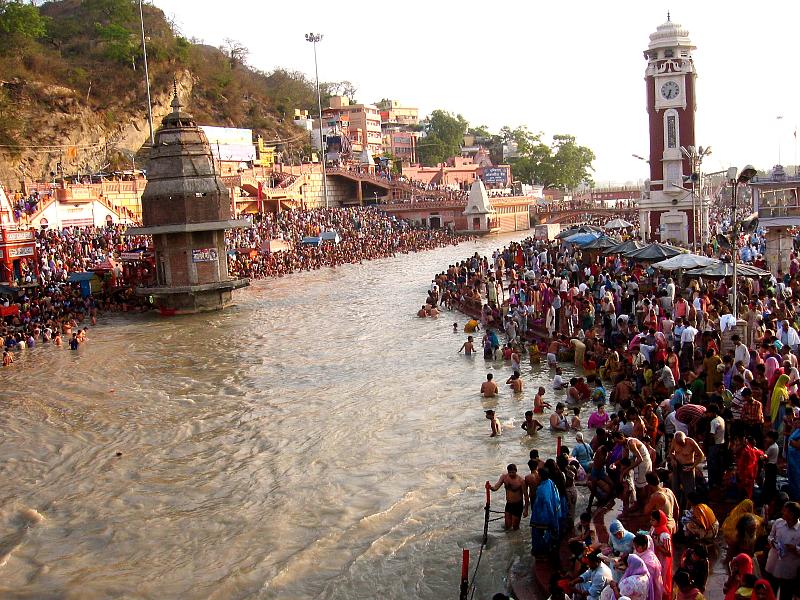
The temples and the ghats make Haridwar one of the most popular pilgrimage sites in India, attracting pilgrims throughout the year. It is also an important center for spiritual learning, with numerous ashrams and educational institutions scattered around the city.
The waters of the Ganges also have mystical powers, and many visitors believe that taking a dip in the river can absolve them of their sins and cure them of any ailments. The temples of Haridwar are all dedicated to various Hindu gods, and visitors are often seen performing poojas (rituals) at these places.
During festivals such as Kumbh Mela and Ganga Dussehra, millions of devotees come to the city in search of spiritual enlightenment. The temples and ghats of Haridwar are a must-visit for any traveler looking to experience traditional Indian culture and spirituality.
Tirupati
Located in Andhra Pradesh, this ancient temple town is home to one of Hinduism’s most revered shrines, the Venkateswara Temple. It is believed that taking a pilgrimage to this temple will absolve one of all their sins and grant them moksha (liberation from the cycle of birth and death).
The temple is believed to have been established by Lord Vishnu himself. It is one of the few temples dedicated to Vishnu and is said to be an incarnation of him. The temple complex also houses many other shrines and deities, including those of Shiva, Ganesha, Hanuman and Narasimha.
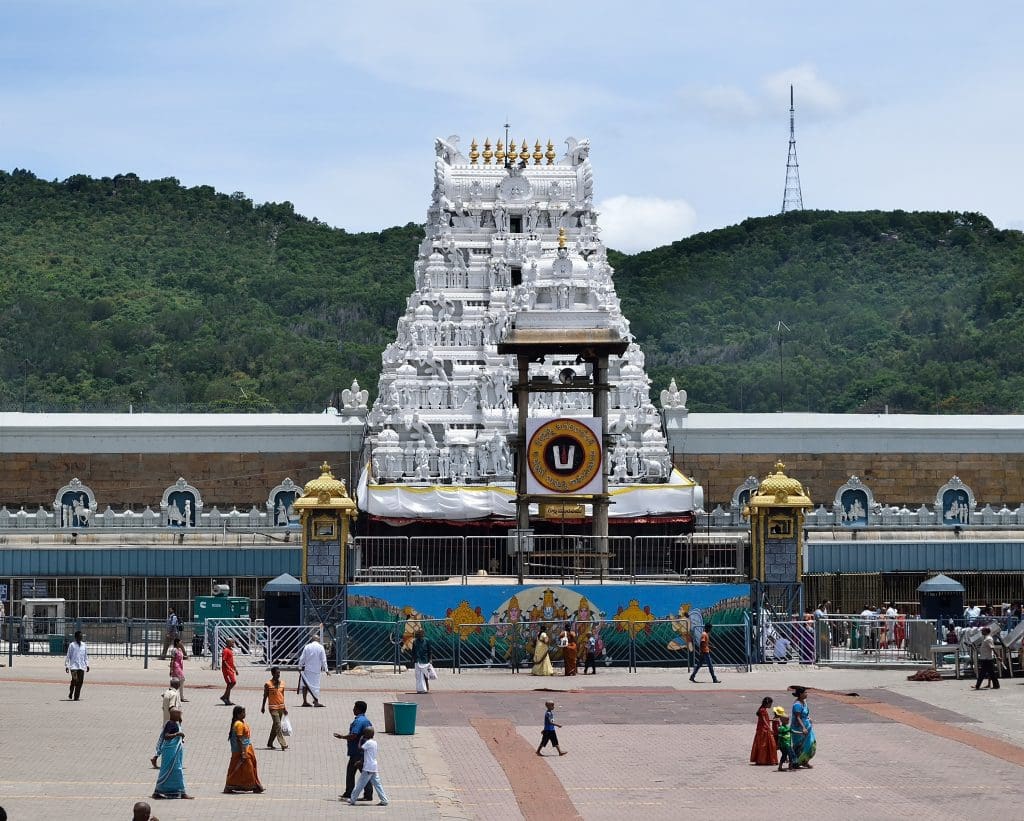
The history of Tirupati dates back to the 7th century when it was known as Thiruvengadam, which means ‘the holy temple of Vishnu’. In the 8th century, it was visited by the Pallavas and Cholas who built several temples here. The Vijayanagara kings were also responsible for the expansion of the temple complex and its various structures.
The annual Brahmotsavam festival is one of the most important events in Tirupati and attracts tourists from around the world. During this time, devotees congregate at the temple complex to celebrate and worship Lord Vishnu. The festival lasts for nine days, during which time devotees are encouraged to perform various rituals such as offering coconuts, flowers and other items to the deity.
Apart from spiritual significance, Tirupati also has a rich historical and cultural heritage. It is home to many ancient monuments and temples, some of which are centuries old. This sacred site is sure to keep you mesmerised with its breathtaking beauty and spiritual ambience.
Whether you’re looking for inner peace or a deeper understanding of your own spirituality, India is the perfect destination. With so many spiritual getaways to choose from, you are sure to find one that fits your needs. Go on one of these pilgrim trips and experience the wonders of India’s rich spiritual history.
Read more: Latest



